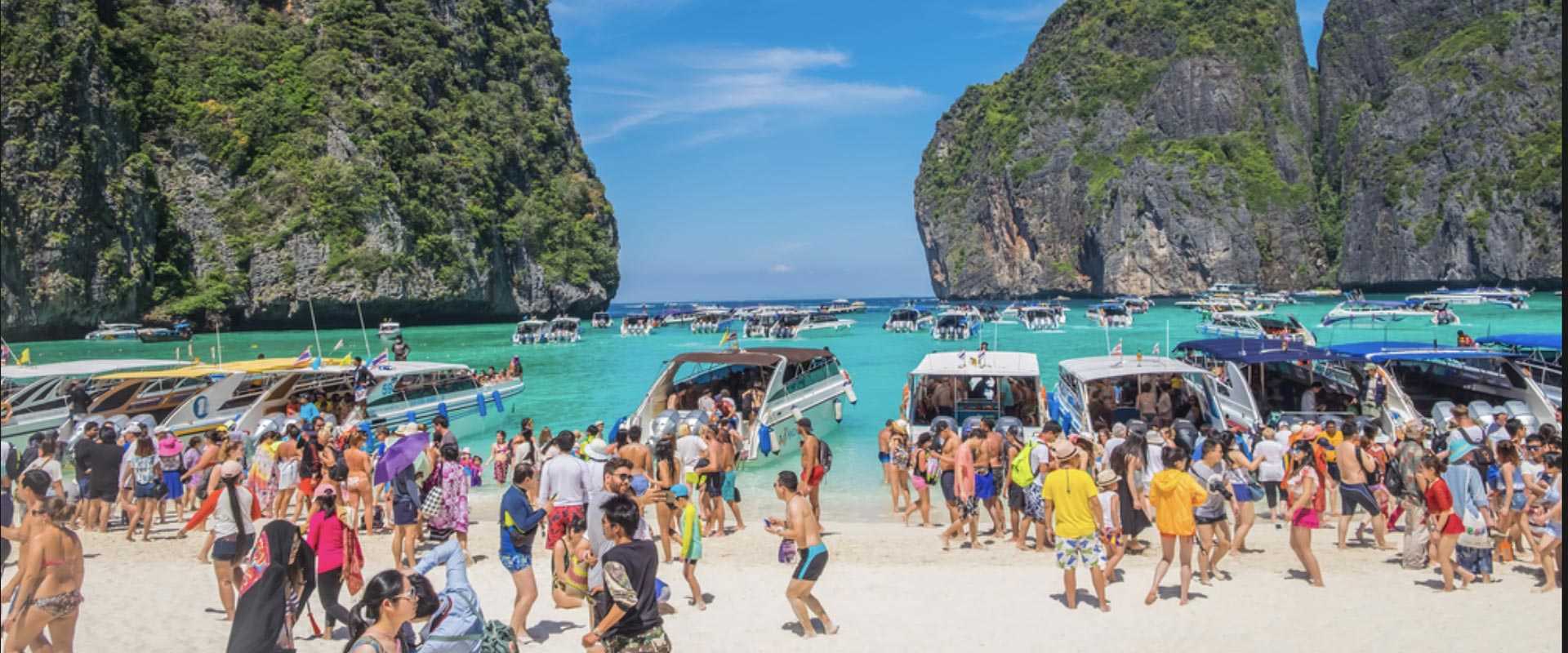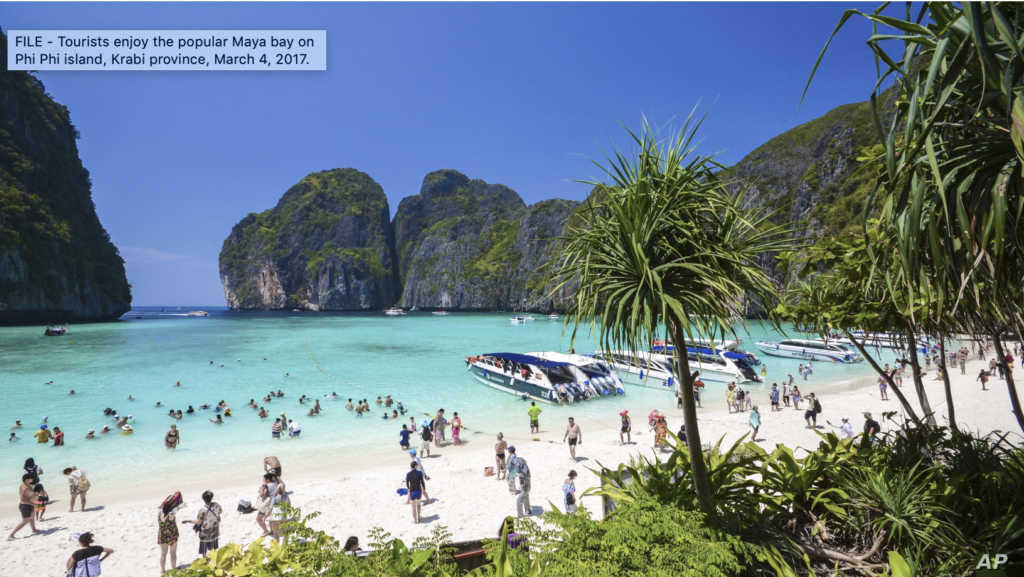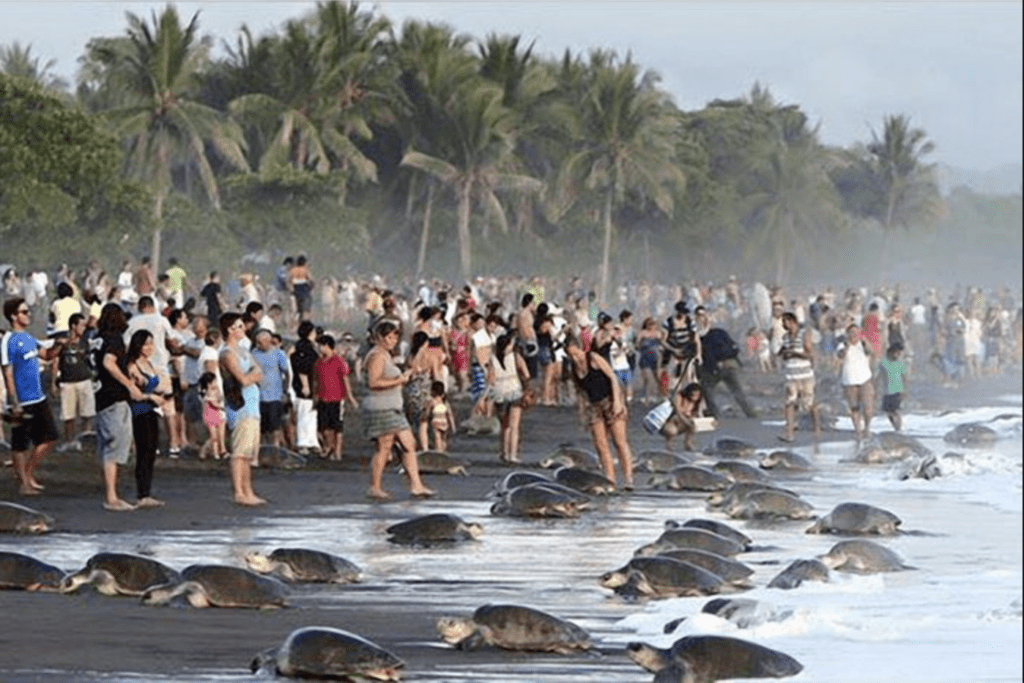0 Comment
“Instagram Tourism”, Are There Too Many Tourists in Raja Ampat?
“Instagram Tourism” has changed the world’s wild (and not so wild) places. And in most cases NOT for the better…at least from a conservation point of view. The photos in this article are NOT from Raja Ampat.
Ten short years ago, we released the guidebook, Diving Indonesia’s Raja Ampat. At that time only 3000 tourists visited the area annually and the consensus among conservationists was that more were needed. Tourism brought much needed media attention and money to the region – economic development that was sustainable as well as directly beneficial to the local population – as opposed to the previous focus on extractive activities like mining, forestry or bomb-fishing. Tourists scattered throughout the region also functioned much like a police force; their sheer presence alone discouraging illegal activities ranging from blast fishing to shark-finning to illegal mining. Due to aggressive management and the creation of a system of Marine Protected Areas, fish biomass has increased dramatically during the past decade.
Last year tourism numbers exceeded 30,000, a 10-fold increase in 10 years! Although these numbers hardly qualify as mass tourism, even with the current level of tourism, some of Raja Ampat’s reefs are already under threat. In ten years time the threats to the reefs could be severe. Already visitors are complaining about trash, pollution, and other environmental abuses, too many divers and liveaboards on specific sites, diver and snorkeler damage at popular locations…the list goes on.
Thailand recently extended their initial one-year closure of Maya Bay (the site of Leonardo DiCaprio’s film “The Beach”) to three years. Tourism there was killing the corals and the number of visitors simply overwhelmed resources and infrastructure – but the initial one year closure was so effective that the government decided to extend this to three years to encourage even stronger recovery of the reefs there. In a similar move, Boracay island in the Philippines has also been closed while regulations and infrastructure were improved; in 2018, the Philippine’s president called the area a “cesspool”! Meanwhile, authorities at Ostional beach in Costa Rica, have been addressing how best to manage an overwhelming influx of tourists during the Arribada, the annual arrival of 100’s of 1000’s olive ridley turtles who use the beach for nesting. These are only a few of the places around the world suffering from too many tourists, far too many of them behaving badly!
Dr. Mark Erdmann, Conservation International’s VP and Director of Marine Programs South Pacific, was recently interviewed about the controversial closing of Maya Beach, in Thailand. Erdmann praised the bold move of the Thai government, and spoke of similar problems in Indonesia and the impact of too many tourists in Bali and in Komodo National Park – where local authorities are discussing potential closures. The problem reaches all the way to Raja Ampat, where some sites are already overwhelmed. Mark feels limiting tourist numbers will be an increasingly common policy reaction from governments needing to respond to degradation from rapid increases in tourism. He states, “Despite our best efforts with the government to put in place policies to ensure sustainable tourism development in Raja Ampat back in 2008-2009, we simply never anticipated the sudden huge increases in visitation (and related environmental pressures) that happen with “instagram tourism” or simply Chinese package tourism, both of which can result in an order of magnitude of more tourists literally overnight – completely overwhelming the carrying capacity of fragile sites.”
Shawn Heinrichs, a well known conservationist and Emmy Award winning film maker, who has spent much of the past decade working in the region, states, “With emerging “eco-tourism” exploding in countries such as China and others, the pressure is way beyond any reasonable carrying capacity. I really think we need to explore layers of access like in Galapagos where you have (a) general access zones (b) much more limited special access zones and (c) no or almost no access zones. We are racing toward a scenario where we “love” Raja to death as well as other areas. The special access zones come with permit and increased fee requirements. This could head off the need to shut down sites and raise critical revenue to support conservation and patrols. Unfortunately the tragedy of the commons principle comes into play, where everyone feels they should have virtually free access to all areas.”
Erdmann continues, “I think we are definitely at the point now in Raja Ampat where we need to closely examine the Galapagos model and adapt this to the local context. Conservation International has initiated productive discussions with the Raja Ampat Tourism Department and the Raja Ampat MPA management authority to significantly ramp up active tourism management in the region – which fortunately the government readily agrees is now needed”. While directly referencing the liveaboard community operating in Raja, he states, “There is going to be a management response to the constantly-increasing number of boats in Raja Ampat each year – this is simply not sustainable and is not in line with the original vision agreed to with the Raja Ampat government and local communities in 2009 to limit annual licenses to 40 ships. Similarly, the overall concept of staying within the tourism carrying capacity of the reefs in Raj Ampat also applies to resorts and homestays – there simply is an upper limit to the number of visitors that can be accommodated each year in Raja Ampat”. While specific details of the new tourism management policies are very much still under discussion and consideration, Erdmann says, “I fully expect that we are going to see some significant management interventions – ranging from temporary closures of certain sites/regions to restrictions on the number of boats allowed to be in a given region at one time to restrictions on amount of time allowed to be in a given region, etc. CI is also strongly recommending to the Raja Ampat government to seriously tighten down on restricting the number of operating licenses available, while also aggressively moving forward with a Raja Ampat-wide mooring buoy system with a plan to eliminate anchoring in Raja Ampat over the next 2-3 years.”
We will continue to bring you updates as management programs are formalized.








































